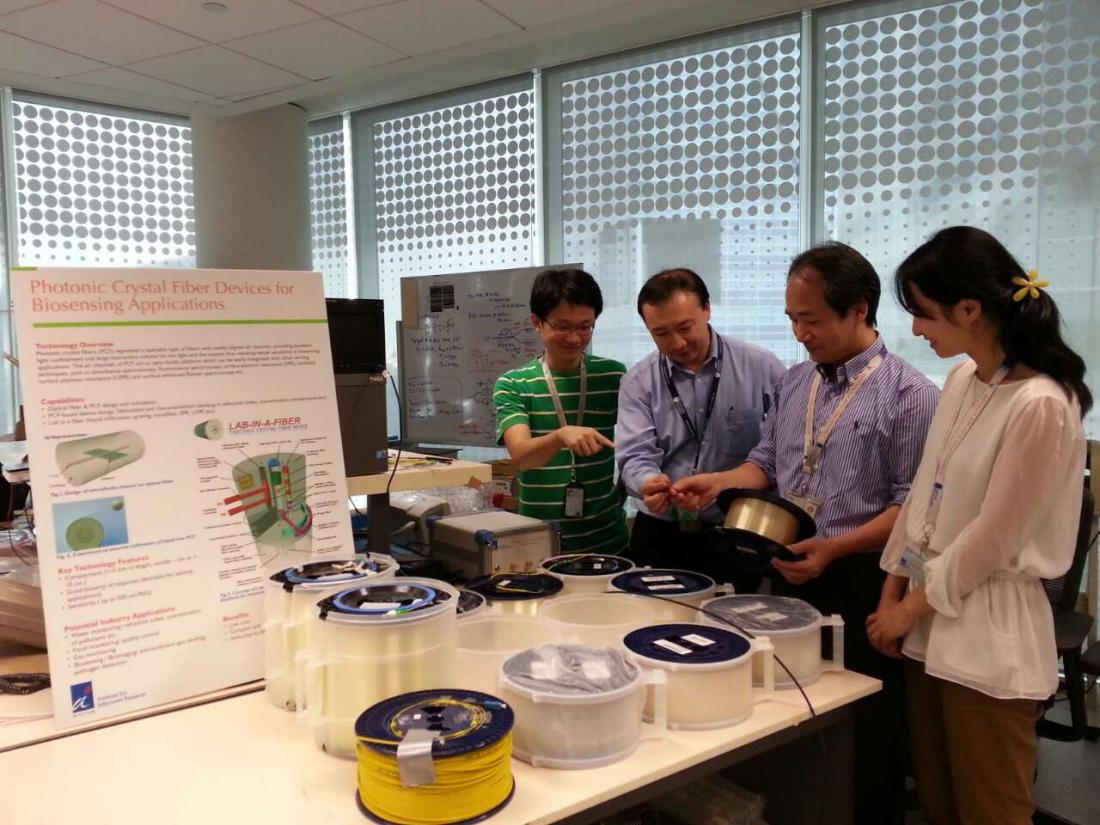The specialty fibre research team assessing optical fibres used to create the fibre labs
The technology uses a photonic crystal fibre (PCF) – an optical fibre in which air channels surround a central core along which light passes. These air channels allow the integration of elements that provide the fibre with additional properties. Such elements often include microelectronics and semiconductors. Now, a collaborative group of researchers from Nanyang Technology University (NTU) and the A*STAR (Agency for Science, Technology and Research) Institute for Infocomm Research (I2R) has focused on developing microfluidic devices in which the air channels are filled with fluid.
Fluid properties can be measured by analysing the extent to which light changes direction – or refracts – when it passes through the fluid. By filling the channels in PCFs with fluid, scientists can use the light in the fibre to measure the properties of this fluid. PCF channels are so small that just trillionths of a millilitre are needed.
The NTU and I2R team previously used this approach to develop a temperature sensor. The researchers filled one channel with a rod-like liquid crystal, which changes its properties when heated. The resulting changes in the refraction of light passing through it can be measured to determine the temperature.
They have also developed a biological sensor that detects the binding of two molecules in solution. The ability to detect such biological interactions in small volumes of fluid could be important for life science research and medical diagnosis.
Their latest work improves on the previous technology, in which fluid was added to channels that run along the fibre. In the new approach, the researchers add fluid to a transverse microchannel that is drilled through the PCF and crosses its core. This maximises the interaction between the light and the fluid.
The new design is highly sensitive to changes in the refraction of light. In addition, it is easier to clean fluid from the new transverse channel than from channels that run along the fibre, making it easier to reuse the device.
The researchers now aim to improve the technology further by incorporating optical antennae, which will further increase its sensitivity to changes in light.
For further information contact:
Professor Perry Shum
School of Electrical and Electronic Engineering
Nanyang Technology University, Singapore
E-mail: [email protected]
Dr Dora Hu
Institute for Infocomm Research
Agency for Science, Technology and Research,
Singapore
E-mail: [email protected]
*This article also appears in Asia Research News 2015 (P.60).



